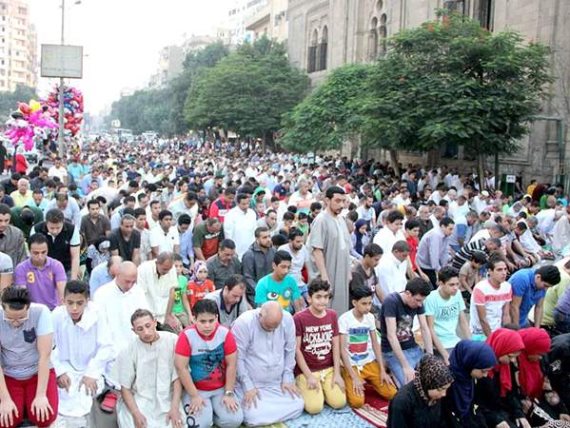In Fayoum's famous commercial street, Ramla, you cannot miss Darwish al-Shamy's sons' workshop which makes the Fatimid lantern with its different shapes and sizes.
The Egyptian tradition of purchasing and lighting lanterns in Ramadan must be the strongest in the Islamic world. This tradition dates back to the Fatimid era when the lanterns were made of copper and were lit by a candle. Later, they were made of tin and tainted glass, and now they are generally made of plastic, working with batteries quite often even singing to you.
But the traditional Fatimid lantern essentially stands out amid the other evolved forms. It also gives a sensation of Ramadan like no other. It remains a legacy unaffected by the appearance of the imported plastic Chinese lantern.
Mohsen Darwish, the owner of the workshop known as the "artist," says he inherited the profession of making lanterns from his great grandparent, al-Shamy. He makes colored-glass tin lanterns, both the big ones lit by light bulbs and the smaller candle-lit ones. The family business is 100 years old and he first learned to make lanterns in the Cairo district of Hussein at the beginning of the last century.
“In the 1950s and 1960s we made kerosene lanterns to light village and city streets throughout the year. The price of one was LE25, but today it sells for LE150,” he says proudly.
The prices of lanterns range from LE3 for the small candle-lit ones , of which he makes some 30,000, to LE150 for the big ones which could be as tall as an average man. The bigger ones come in different shapes, including the shapes of a barrel, lotus flower, tower and star. The workshop makes around 3,000 of the bigger size lanterns.
It is not exactly known how the lantern originated. He says that there are several stories about the origin of the lantern, which his grandparents used to tell him. In one of the stories, it is said that that the Fatimid Caliph used to go out to the streets on the night of the sighting of the crescent and the children used to go out one the same night to light the streets for him, each carrying his or her lantern.
In another story, it is said that one of the Fatimid caliphs wanted to light the streets of Cairo throughout Ramadan and so he ordered all mosque imams to hang candle-lit lanterns.
And yet another story says that in the Fatimid era women were not allowed out of their homes except in Ramadan. When they did go out, they were accompanied by little boys carrying lanterns and later when women became free to go out, they still stuck to the tradition.
"Whatever the origin of the lantern, it remained a sign of Ramadan and a legacy that generations inherited, particularly the Fatimid lantern."
The Chinese lantern, which takes the shapes of Mickey Mouse, horses and other Islamic shapes is completely different from the Fatimid lantern which was used to decorate palaces.




